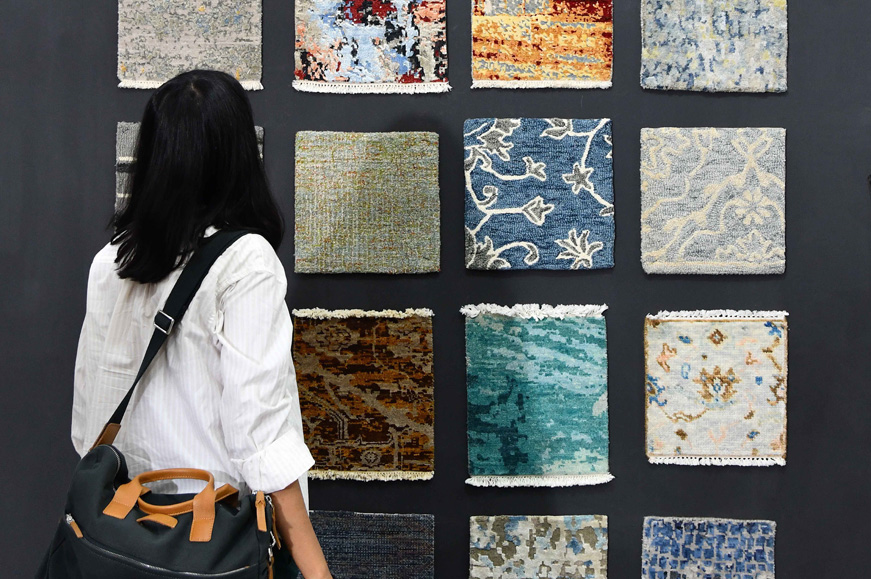
The Color Palette: Dyeing Techniques in Rug Making
In the world of rug making, color isn't just a choice; it's the soul of the masterpiece. The journey of crafting a high-quality rug begins not with yarn or loom, but with the selection and infusion of colors. It's a journey that's steeped in artistry, tradition, and an intimate understanding of how colors can breathe life into a rug's very fibers.
Welcome to a captivating exploration of the vibrant world of rug dyeing techniques. In this blog, we peel back the layers to reveal the intricate artistry behind color selection, the age-old traditions of natural dyes, the precision of synthetic pigments, and the meticulous processes that transform plain fibers into exquisite works of art. Join us as we unveil the secrets of the color palette, where every hue has a story to tell and every rug becomes a canvas for creativity and cultural expression.
The Artistry of Color Selection
In the world of rug making, color is not merely a choice but a form of expression. The journey of creating a high-quality rug begins with the selection of the right colors. It's a process that involves creativity, cultural significance, and an understanding of how colors can impact a rug's final appearance.
Natural Dyes - A Heritage Preserved
One of the most traditional and revered dyeing techniques in rug making is the use of natural dyes. Derived from plants, minerals, and insects, these dyes connect us to age-old traditions. Madder root for reds, indigo for blues, and cochineal insects for vibrant pinks are just a few examples of the rich natural palette used to infuse rugs with character and depth.
Synthetic Dyes - Versatility and Precision
While natural dyes hold a special place in the rug-making world, modern times have seen the introduction of synthetic dyes. These vibrant and long-lasting pigments offer a broader range of colors and can be precisely controlled for consistency. They've become invaluable for artisans striving to achieve specific shades in their designs.
The Dyeing Process - A Work of Precision
Once the colors are selected, the dyeing process begins. Whether using natural or synthetic dyes, this step requires meticulous attention to detail. Each batch of yarn is carefully immersed in the dye bath, and the duration of exposure, temperature, and even the pH levels are closely monitored. These factors influence the final color, and even the slightest variation can produce distinct shades.
The Art of Over-Dyeing - Depth and Complexity
For rugs that require unique, layered hues, over-dyeing is a technique that adds depth and complexity. This involves dyeing the yarn first with one color and then immersing it in another dye bath. The result is a rug with colors that seem to shift and play with different lighting conditions.
Colorfastness - Ensuring Vibrancy for Years to Come
A hallmark of quality in rug making is colorfastness, which ensures that the vibrant hues stay true over time. This involves various treatments and processes to set the dyes and prevent fading, even with exposure to sunlight and regular foot traffic.
Custom Color Creations - Meeting Unique Demands
In the world of custom rugs, color possibilities are limited only by imagination. Rug artisans can create entirely bespoke color palettes to match a client's vision or interior design scheme. This level of customization ensures that each rug is a one-of-a-kind piece of art.
Cultural Significance - Colors Tell a Story
Colors in rugs often carry cultural significance. In many rug-making traditions, specific colors are imbued with meaning. For example, in some Persian rugs, red symbolizes love and courage, while blue represents protection and spirituality. Understanding these cultural nuances adds depth to the appreciation of these creations.
Modern Innovations - Pushing the Boundaries
As technology advances, so do the possibilities in rug dyeing. Innovations like digital printing enable intricate designs and gradients that were once difficult to achieve with traditional methods. These modern techniques open up exciting avenues for rug designers and enthusiasts alike.
In conclusion, the dyeing techniques in rug making are a testament to the fusion of tradition and innovation. Whether using natural or synthetic dyes, each rug is a canvas where colors are carefully chosen, blended, and set to create stunning works of art. The selection and manipulation of colors in rug design isn't just a craft; it's an art form that enriches our homes and our lives with its beauty and cultural significance.

